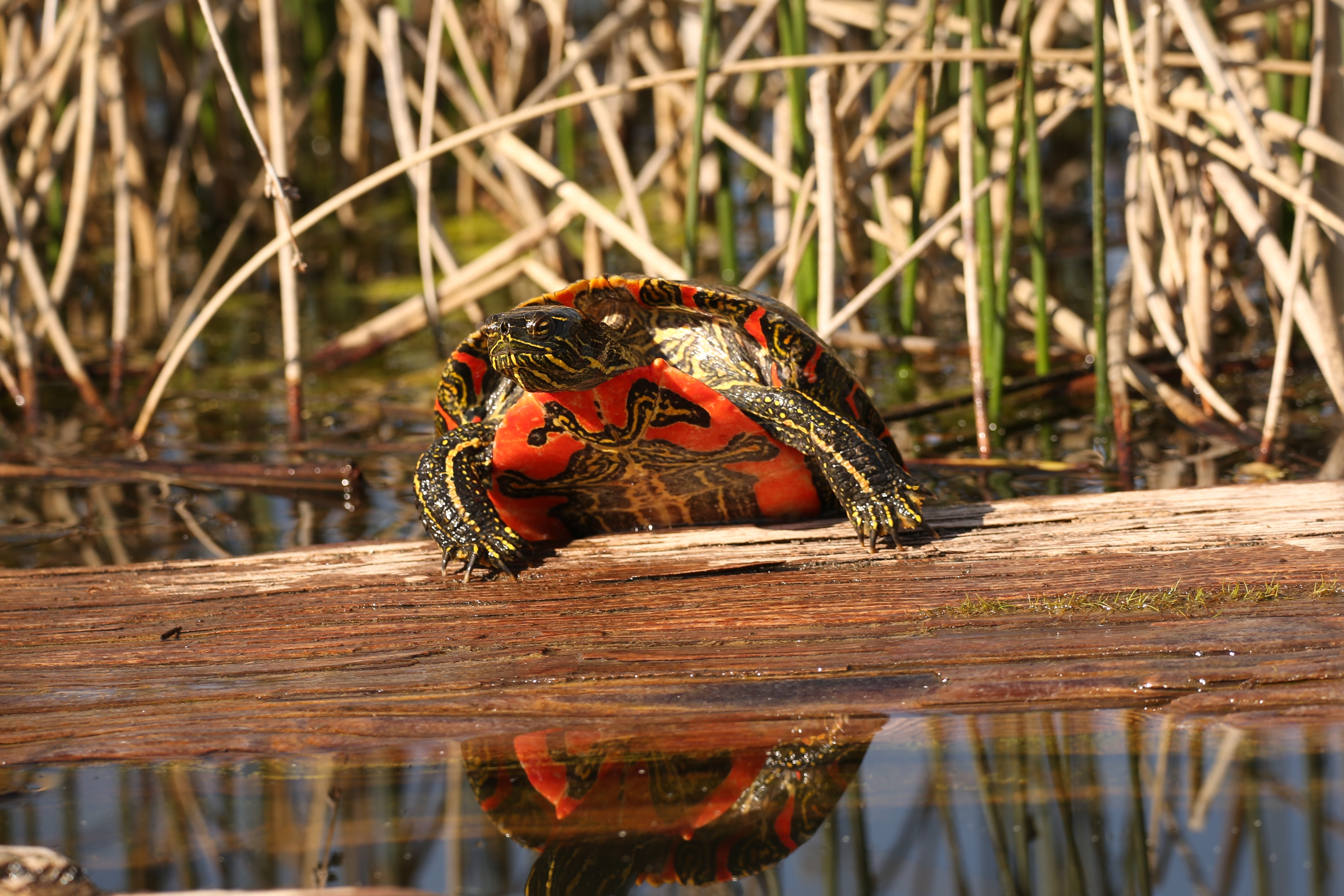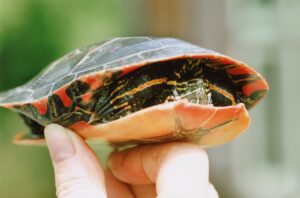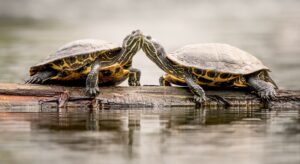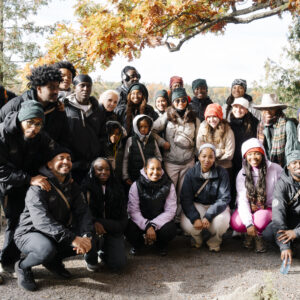The Western Painted Turtle: the Bright Spot in Your Neighbourhood Wetland
Thanks to our Nature Network partner, Habitat Acquisition Trust, for sharing this month’s blog.
The Western Painted Turtle gets its name from its colorful markings: bright yellow stripes on the head and limbs and a beautifully patterned shell with bright orange and yellow hues. This freshwater reptile is Vancouver Island’s only remaining native turtle, and it is endangered.
In British Columbia (BC), there are two remaining populations: the Intermountain-Rocky Mountain Population in the southern interior, and the Pacific Coast Population in the southwest. The coastal population is found in the Lower Fraser Valley and Sunshine Coast on the mainland, as well as on Vancouver Island and some of the Gulf Islands in the Strait of Georgia.
Tiffany Joseph, an experienced environmental steward and SENĆOŦEN language learner, shared with the Habitat Acquisition Trust that the SENĆOŦEN word for turtle is MOÍUIĆ during her teachings of the W̱SÁNEĆ language and culture. The scientific name for the Western Painted Turtle is Chrysemys picta bellii.

The endangered Western Painted Turtle is Vancouver Island’s only native turtle.
The distribution of the Pacific Coast population overlaps with densely populated and highly modified areas, where urban development, drainage of wetlands, forestry, road building, and other human activities threaten turtle populations. Turtles are also at risk of being run over by vehicles when crossing roads between their wetland homes and on-land nesting habitats. These turtles require wetland habitats for foraging and hibernation and suitable warm sites on land for egg-laying. Egg-laying habitats are often in short supply, which is a limiting factor for this species and other freshwater turtles. Western painted turtles also compete for food and habitat against invasive species, such as the Red-eared slider.

A Western Painted Turtle shows its true colours. (Photo: Woody Thomson)
The Western Painted Turtle is often confused with invasive species like the Red-eared Slider (Trachemys scripta elegans) and the Yellow-bellied Slider (Trachemys scripta scripta) due to their similar size, colouration, and habitat preferences.
Non-native turtles, particularly the Red-eared Slider (Trachemys scripta elegans), pose significant threats to Western painted turtle populations and ecosystems. The introduction of non-native turtles is largely due to their popularity in the pet trade. Unfortunately, many turtles, including Red-eared and Yellow-bellied Sliders, are released into the wild by pet owners who can no longer care for them. These turtles can often live up to 50 years old and grow over 30 cm long. There are at least 6 species that have been abandoned in BC lakes and ponds. Of all the species released, the Red-eared slider is the only one released in high enough numbers to allow males and females to find each other and reproduce.

The invasive Yellow-bellied Slider, pictured above, is often mistaken for the native Western Painted Turtle. (Photo: Jen Anderson)
If an abandoned pet survives the release into the wild, it poses a serious threat to our native Western painted turtles. Red-eared Sliders are highly adaptable and often outcompete Western painted turtles for resources, including food, habitat, basking sites, and feeding sites.
Another concern is the potential for introduced turtles to transmit diseases and parasites to Western Painted Turtles. As an introduced species, they may carry pathogens to which local populations have no resistance, further threatening the health and survival of Western Painted Turtles.
Community members can play a vital role in mitigating this problem by avoiding the release of pet turtles into the wild, supporting conservation initiatives aimed at controlling invasive species, and spreading awareness about the importance of protecting native wildlife.
| Your observations of turtles and turtle nests on South Vancouver Island and the Gulf Islands are important. By reporting them, you are actively contributing to the conservation of our native wildlife. Please send your observations, with clear photographs whenever possible, to hatmail@hat.bc.ca. |
To learn more about the Western Painted Turtle, visit: hat.bc.ca/western-painted-turtles.
To support HAT, visit: hat.bc.ca/growhope.
Want to help Canadian species like the Western Painted Turtle and more? Stay tuned with the latest in Canadian nature by subscribing for email updates. You’ll receive regular updates about what we’re doing to protect Canadian nature and how you can help.



